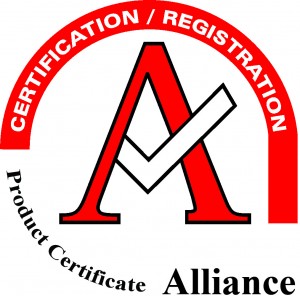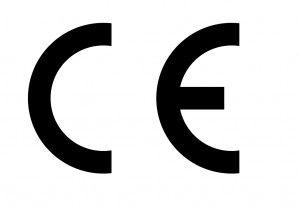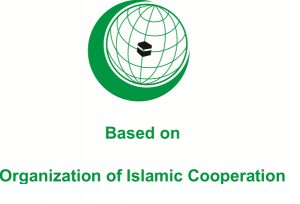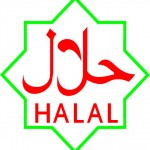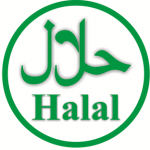ISO 9001 “Quality management systems – Requirements.” This standard is for organizations that wish to achieve a recognizable and consistent level of quality management. It is the most common management standard for certification. It is structured into eight sections.
ISO 14001 (Environmental Management Systems) is a management tool enabling an organization of any size or type to identify and control the environmental impact of its activities, products or services, and to improve its environmental performance continually, and to Implement a systematic approach to setting environmental objectives and targets, to achieve these goals and to demonstrate that they have been met.
HACCP Hazard Analysis and Critical Control Point (HACCP) is a systematic preventive approach to food safety and pharmaceutical safety that addresses physical, chemical, and biological hazards as a means of prevention rather than finished product inspection.
ISO 22000 (Food Management Systems) was created to ensure that organizations demonstrate their ability to manage food safety hazards and provide consistently safe products that meet both the customer’s requirements and those of food safety regulations. ISO 22000 integrates the principles of the Hazard Analysis and Critical Control Point (HACCP) system and the application steps developed by the Codex Aliment Arius Commission, thus providing the means to determine and document why certain identified hazards need to be controlled by a particular organization and why others need not. These requirements are listed in sections 4, 5, 6, 7, and 8 of ISO 22000.
SQF 2000 (Safe Quality Food) was created by the Safe Quality Food Institute and is designed to meet the criteria of the Global Food Safety Initiative (GFSI) that was established by The Food Business Forum (CIES). GFSI criteria include three key elements: Food Safety Management; Good Practices for Agriculture, Manufacturing, and Distribution (GAPs, GMPs, GDPs); and HACCP (Hazard Analysis and Critical Control Points). In the United States, the Safe Quality Food Institute’s SQF 2000 Code is a GFSI benchmarked standard that can be used as base requirements.
Good manufacturing practices (GMP) are the practices required in order to conform to the guidelines recommended by agencies that control authorization and licensing for manufacture and sale of food, drug products, and active pharmaceutical products. These guidelines provide minimum requirements that a pharmaceutical or a food product manufacturer must meet to assure that the products are of high quality and do not pose any risk to the consumer or public.Good manufacturing practices, along with good agricultural practices, good laboratory practices and good clinical practices, are overseen by regulatory agencies in the United States, Canada, Europe, China, and other countries.
OHSAS 18001 is the standard against which organizations are assessed on their Health and Safety performance. As with other standards, it is based around the setting of objectives and targets and the monitoring of the businesses performance against these.
ISO 10002 provides guidance on the process of complaints handling related to products within an organization, including planning, design, operation, maintenance and improvement. The complaints-handling process described is suitable for use as one of the processes of an overall quality management system.
ISO/TS 10004 provides guidance in defining and implementing processes to monitor and measure customer satisfaction. ISO 10004:2012 is intended for use by organizations regardless of type, size or product provided. The focus of ISO 10004:2012 is on customers external to the organization.
AS9100 is a widely adopted and standardized quality management system for the aerospace industry. It was released in October, 1999, by the Society of Automotive Engineers and the European Association of Aerospace Industries.
ISO/IEC 17020 “Conformity assessment – Requirements for bodies performing inspection. This standard’s purpose is evident from its title. It is applicable only to the few hundred bodies worldwide that perform the inspection service.
ISO/IEC 17025 “General Requirements for the competence of testing and calibration laboratories”. This standard’s purpose is evident from its title. It is applicable only to several thousand organizations worldwide that provide calibration and testing services. ISO 14000 is a standard for environmental management systems that is applicable to any business, regardless of size, location or income. The aim of the standard is to reduce the environmental footprint of a business and to decrease the pollution and waste a business produces.
EN16001 Energy Management is suitable for any organization – whatever your size, sector or geographical location. It is particularly relevant if you operate in an energy intensive industry or one facing GHG emission legislation.
ISO50001 Energy Management specifies requirements for establishing, implementing, maintaining and improving an energy management system, whose purpose is to enable an organization to follow a systematic approach in achieving continual improvement of energy performance, including energy efficiency, energy use and consumption. ISO 50001:2011 specifies requirements applicable to energy use and consumption, including measurement, documentation and reporting, design and procurement practices for equipment, systems, processes and personnel that contribute to energy performance.
ISO10015 Quality management. Guidelines for training. ISO10006 Quality management systems – Guidelines for quality management in projects, is an international standard developed by the International Organization for Standardization.
ISO/TS16949 is an ISO technical specification aiming to the development of a quality management system that provides for continual improvement, emphasizing defect prevention and the reduction of variation and waste in the supply chain. It is based on the ISO 9001 and the first edition was published in March 2002 as ISO/TS 16949:2009. It was prepared by the International Automotive Task Force (IATF) and the “Technical Committee” of ISO. It harmonizes the country-specific regulations of Quality Management Systems.
ISO/IEC27001 part of the growing ISO/IEC 27000 family of standards, is an Information Security Management System (ISMS) standard published in October 2005 by the International Organization for Standardization (ISO) and the International Electro technical Commission (IEC).
TL9000 is a quality management practice designed by the Quest Forum in 1998. It was created to focus on supply chain directives for the international telecommunications industry.
ISO13485 (Medical Devices Management Systems) was created to ensure that medical device manufacturers are meeting compliance and regulatory standards as set forth by their customers. Certification to ISO 13485 is now a direct requirement for some markets such as Australia and Taiwan; an indirect requirement for others such as Europe; and can form the basis of GMP compliance in the United States. Though based on ISO 9001, ISO 13485 removes ISO 9001’s emphasis on continual improvement and customer satisfaction and instead places emphasis on meeting regulatory and customer requirements, risk management and maintaining effective processes.
ISO10006 (quality management in projects)It is applicable to projects of varying complexity, small or large, of short or long duration, in different environments, and irrespective of the kind of product or process involved. This can necessitate some tailoring of the guidance to suit a particular project. ISO 10006:2003 is not a guide to “project management” itself. Guidance on quality in project management processes is discussed in this International Standard.
ISO/TS 29001 defines the quality management system for product and service supply organizations for the petroleum, petrochemical and natural gas industries. Boxed text is original ISO 9001:2008 text unaltered and in its entirety. The petroleum, petrochemical, and natural gas industry sector-specific supplemental requirements are outside the boxes.
ISO10668 (Brand Valuation) specifies requirements for procedures and methods of monetary brand value measurement. It specifies a framework for brand valuation, including objectives, bases of valuation, approaches to valuation, methods of valuation and sourcing of quality data and assumptions. It also specifies methods for reporting the results of such valuation.
ISO22301 (Business Continuity Management System)specifies requirements to plan, establish, implement, operate, monitor, review, maintain and continually improve a documented management system to protect against, reduce the likelihood of occurrence, prepare for, respond to, and recover from disruptive incidents when they arise.
ISO26000 (Social Responsibility) is intended to assist organizations in contributing to sustainable development. It is intended to encourage them to go beyond legal compliance, recognizing that compliance with law is a fundamental duty of any organization and an essential part of their social responsibility. It is intended to promote common understanding in the field of social responsibility, and to complement other instruments and initiatives for social responsibility, not to replace them.
ISO3834 Welding Quality Assurance is a so-called “special” process, which means that you cannot make a complete verification of the welded joint without destroying it. To examine the mechanical properties, you have to take samples from the welded product. Therefore you have to build quality in from the beginning.
To ensure the proper quality of your welded product and to optimize your manufacturing cost, the whole welding process must be controlled from the very start. To take all welding quality affecting aspects into consideration, the welding shop is recommended to implement a quality assurance system. The standard ISO 3834 sets out requirements for manufacturers to meet, in order to apply good practice to their welding operations.
The person responsible for welding, or the welding coordinator, in the welding shop, is responsible for the welders’ competence and the education and the management of the welders. The coordinators´ competence requirements, the tasks and responsibilities, are regulated in the standard ISO 14731.
To make sure your welding process is of good quality you need to implement a Welding Quality Assurance System.
Alliance is an accredited certification body for the certification of welders, qualification of welding procedures and certification of welding shops/welding companies for ISO 3834.
Product certification assures suppliers, retailers, regulators and consumers that an independent organization has reviewed a product’s manufacturing process and determined that the product complies with specific standards for safety, quality, sustainability or performance. From extensive product testing and material analyses to plant inspections and auditing, we evaluate every aspect of a product’s development.
CE marking is a mandatory conformity marking for certain products sold within the European Economic Area (EEA) since 1985. The CE marking is also found on products sold outside the EEA that are manufactured in, or designed to be sold in, the EEA. This makes the CE marking recognizable worldwide even to people who are not familiar with the European Economic Area. It is in that sense similar to the FCC Declaration of Conformity used on certain electronic devices sold in the United States.The CE marking is the manufacturer’s declaration that the product meets the requirements of the applicable EC directives.The mark consists of the CE logo and, if applicable, the four digit identification number of the Notified Body involved in the conformity assessment procedure.”CE” originated as an abbreviation of Conformité Européenne, meaning European Conformity, but is not defined as such in the relevant legislation. The CE marking is a symbol of free marketability in the European Economic Area (Internal Market).
The directives requiring CE marking affect the following product groups:
- Active implantable medical devices (excludes surgical instruments)
- Appliances burning gaseous fuels
- Cableway installations designed to carry persons
- Construction products
- Eco-design of energy related products
- Electromagnetic compatibility
- Equipment and protective systems intended for use potentially explosive atmospheres
- Explosives for civil uses
- Hot-water boilers
- In vitro diagnostic medical devices
- Lifts
- Low voltage
- Machinery
- Measuring Instruments
- Medical devices
- Noise emission in the environment
- Non-automatic weighing instruments
- Personal protective equipment
- Pressure equipment
- Pyrotechnics
- Radio and telecommunications terminal equipment
- Recreational craft
- Restriction of the use of certain hazardous substances in electrical and electronic equipment RoHS 2
- Safety of toys
- Simple pressure vessels
Halal Certification is a recognition that the products are permissible under Islamic law. These products are thus edible, drinkable or usable by Muslims.Halal is an Arabic word meaning lawful. It refers to things or actions permitted by Shariah law without punishment imposed on the doer. It is usually used to describe something that a Muslim is permitted to engage in, e.g. eat, drink or use.The opposite of halal is haram , which is Arabic for unlawful or prohibited.
All kinds of food are considered halal except the following, which are haram:
• Swine/pork and its by-products .
• Animals improperly slaughtered or dead before slaughtering .
• Animals not slaughtered in the name of Allah .
• Alcohol and all forms of intoxicating and hazardous drinks .
• Carnivorous animals, birds of prey, and land animals without external ears .
• Pests such as rats, centipedes, scorpions and other similar animals .
• Animals forbidden to be killed in Islam e.g. ants, bees, spider and woodpecker birds .
• Animals which are considered repulsive generally like lice, flies, maggots and other similar animals .
• Animals that live both on land and in water such as frogs, crocodiles and other similar animals .
• Blood and by-products of blood .
• Foods and drinks which contain any of the above haram ingredients or contaminated through contact with any of the above products .



